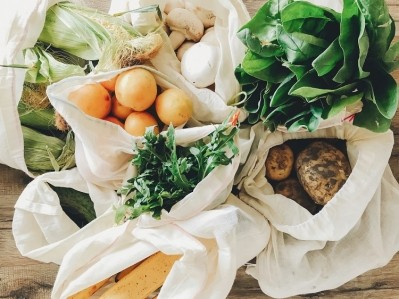What's next in food and beverage product development? Mintel talks texture, moderate protein, and fickle consumers
This content item was originally published on www.foodnavigator-usa.com, a William Reed online publication.
"Consumers are complex and contradictory, but they’re also really fickle. So there’s always room for something new," Lynn Dornblaser told FoodNavigator-USA at the SupplySide West trade show in Las Vegas last month.
However, one thing that hits home for many consumers and will encourage repeat purchases is striking the right balance of indulgence and health, which can be a moving target, she said.
"Quite often that means for products themselves is they’ve got something that’s wholesome and natural because that’s what today’s consumers think of with health and wellness, but then it’s got something else that’s flavor, texture, and experience, and that’s that sense of indulgence."
"One of the best examples that we’ve seen of permissible indulgence is the Oreo Thins because they happen to taste exactly like an Oreo cookie, there’s just less of it," said Dornblaser.
Consumers' desire for new textures
However one way to deliver a sense of indulgence is through texture, noted Dornblaser, which can play an important role in how consumers experience food and beverage products. Mintel tracks 25 texture attributes mentioned on product packaging, of which five are commonly mentioned: crunchy, smooth, soft, carbonated, and chunky, leaving 20 other texture attributes out of the product marketing and branding conversation.
"When it comes to texture, it’s all about what’s that thing that satisfies that craving in that moment. It could be just about anything," said Dornblaser, noting that snacks are the category prime for this as many US consumers fall in the bucket of 'super snackers' (20% of consumers snack four or more times a day, according to Mintel).
Texture can be as simple as 'mix-in' ingredients in ice cream products or Mondelēz's limited-edition Firework Oreos with popping candy mixed into the cream filling.
Has the protein story changed?
Protein claims and marketing, which has been the better-for-you highlight of many new product launches in recent years, is also evolving.
"Consumers are funny because I don’t think they really understand how much protein is the right amount of protein, how much protein might be too much protein, and what kind of numbers they should shoot for," Dornblaser said.
"I think what consumers see is protein, it’s good for me, plant protein is even better for me, I’m going to eat that."
However, there seems to be less of an importance placed on achieving 'mega' protein amounts (e.g. 20 g or 30 g protein claims) and a trend towards moderate amounts of protein.
"It’s about finding the right mix of protein and texture and flavor and benefit that’s going to work for consumers. And it feels like that is settling out at a lower number than perhaps what we might have thought of two or three years ago," said Dornblaser.
"Except for performance drinks, performance bars, that’s a whole separate category, and they’re always going to be extraordinarily high protein. Consumers will not worry about what it tastes like because of the benefit," said Dornblaser.















